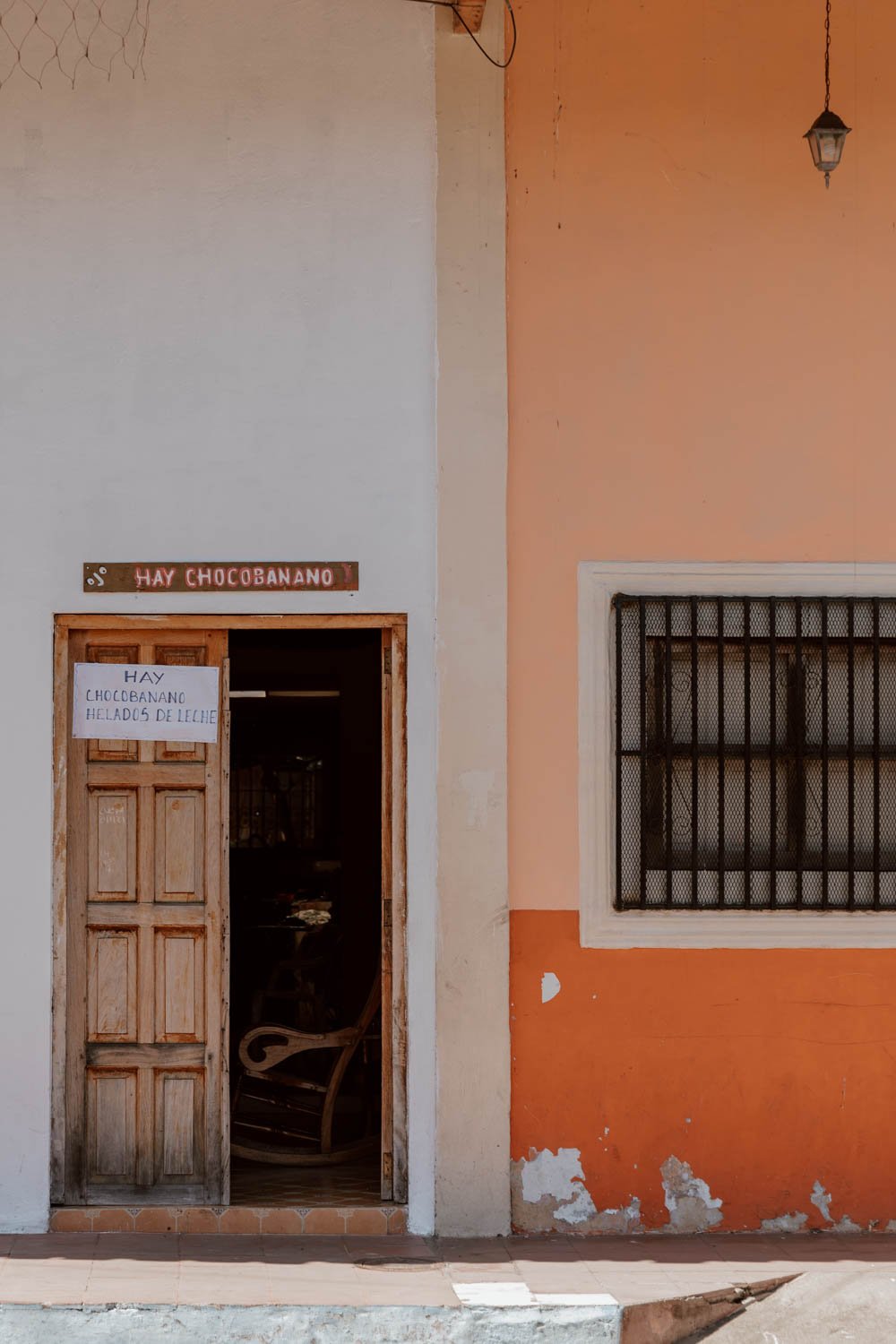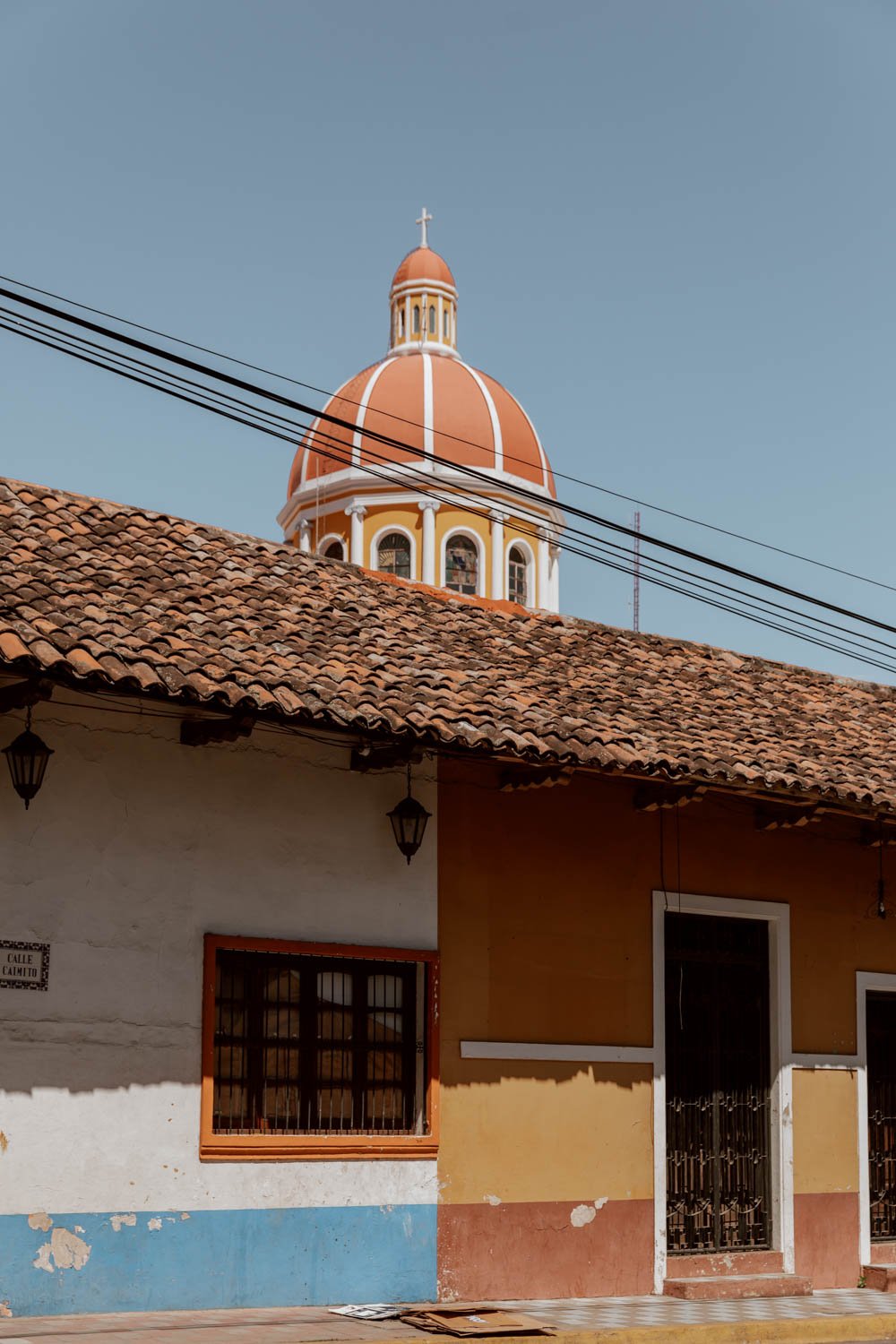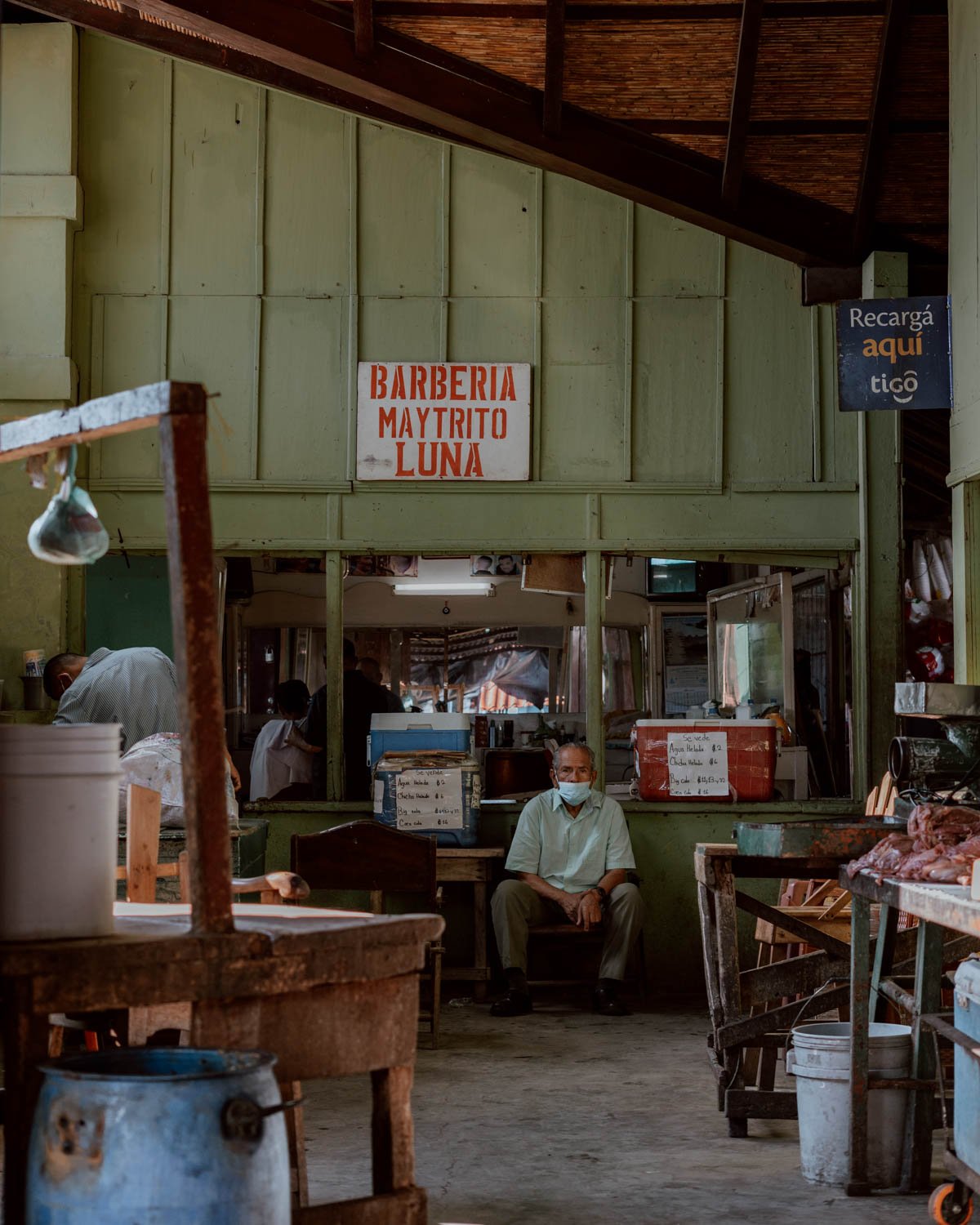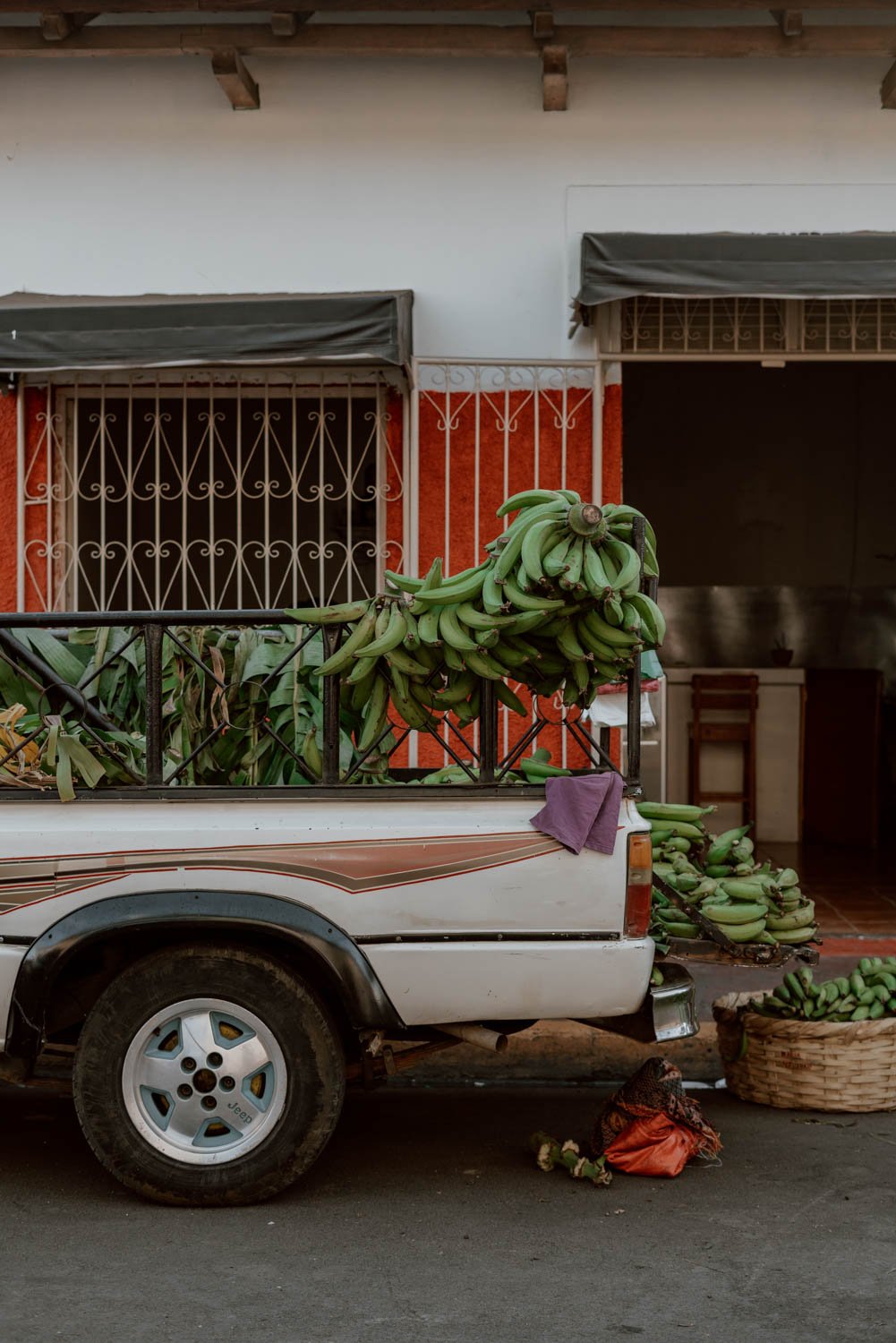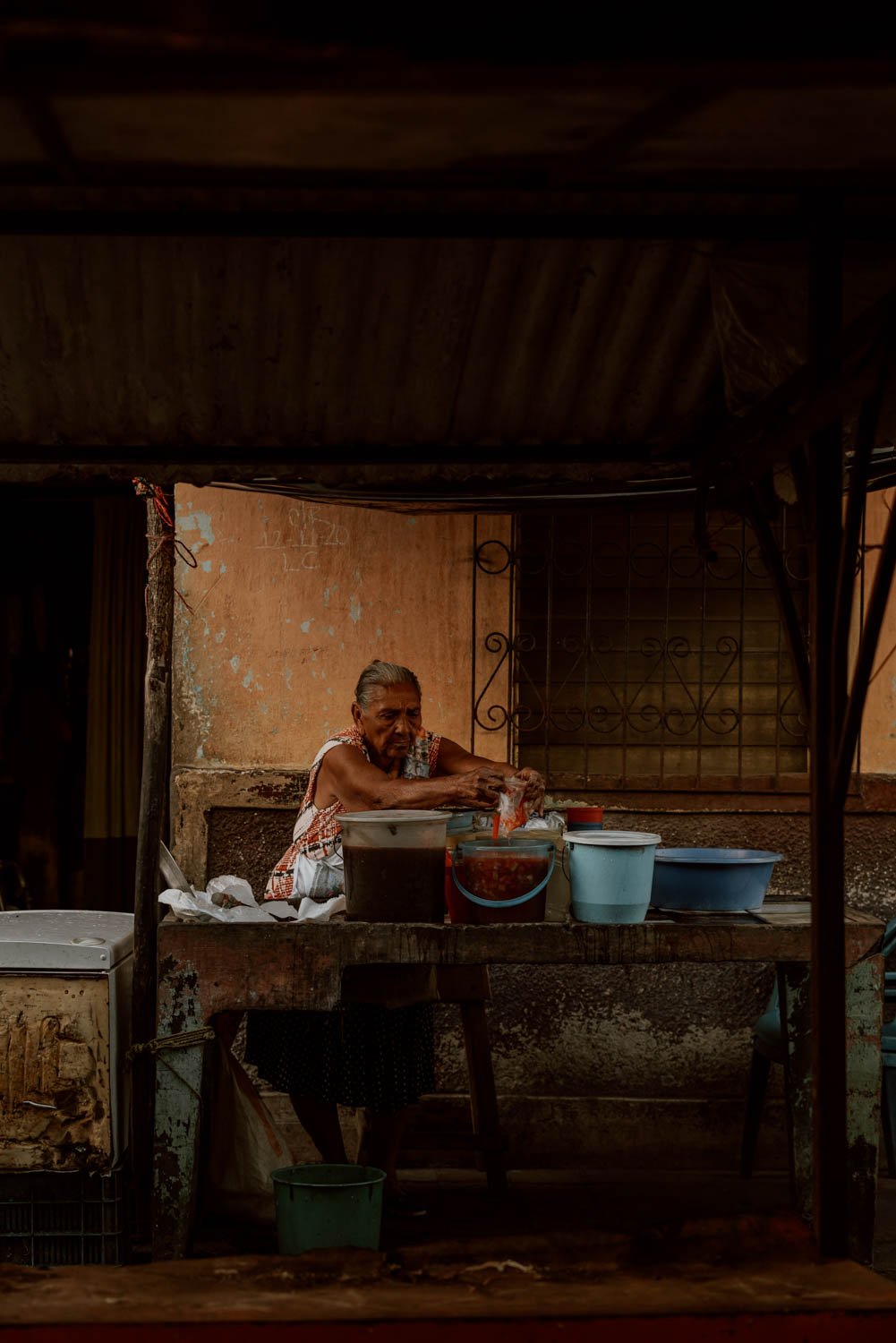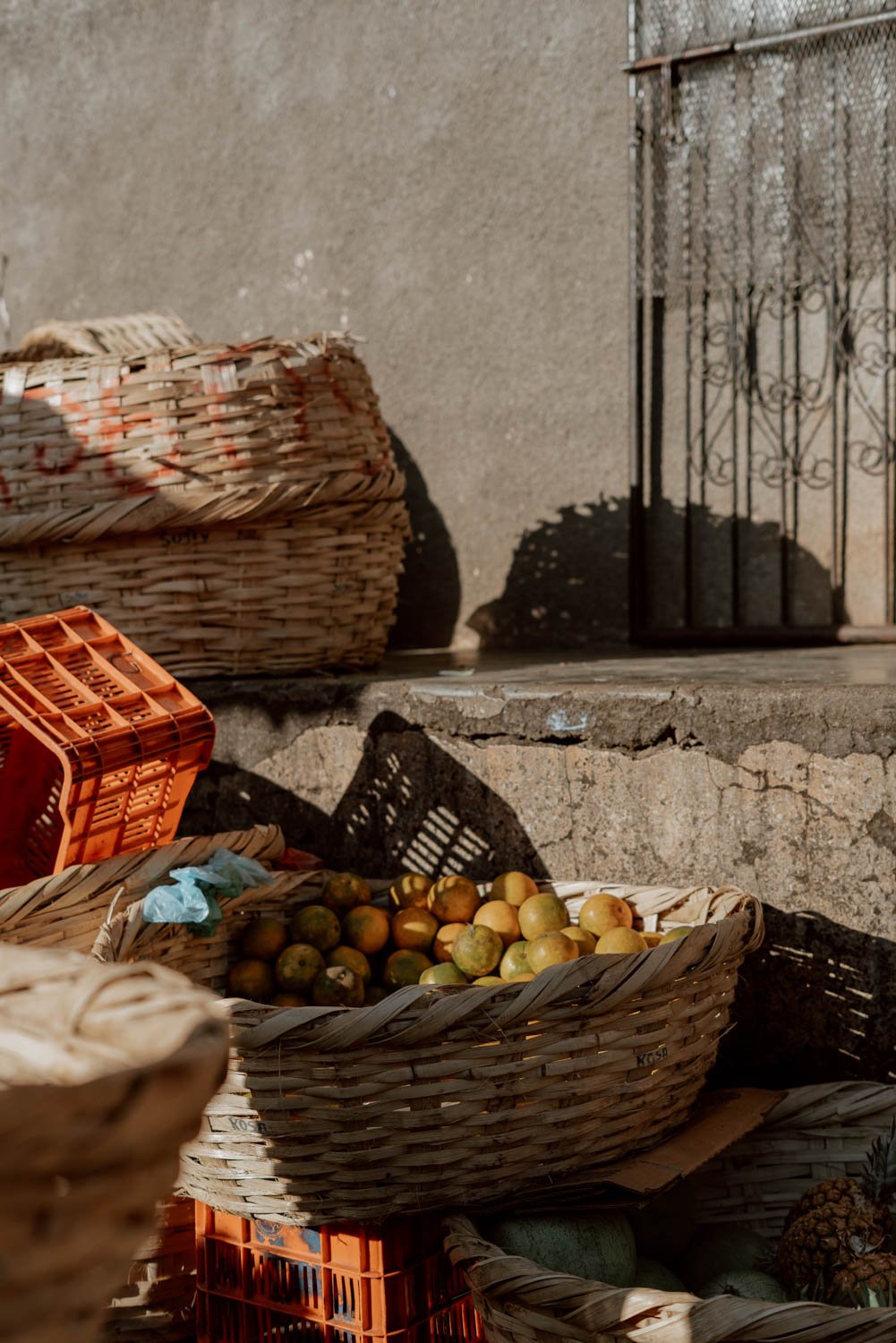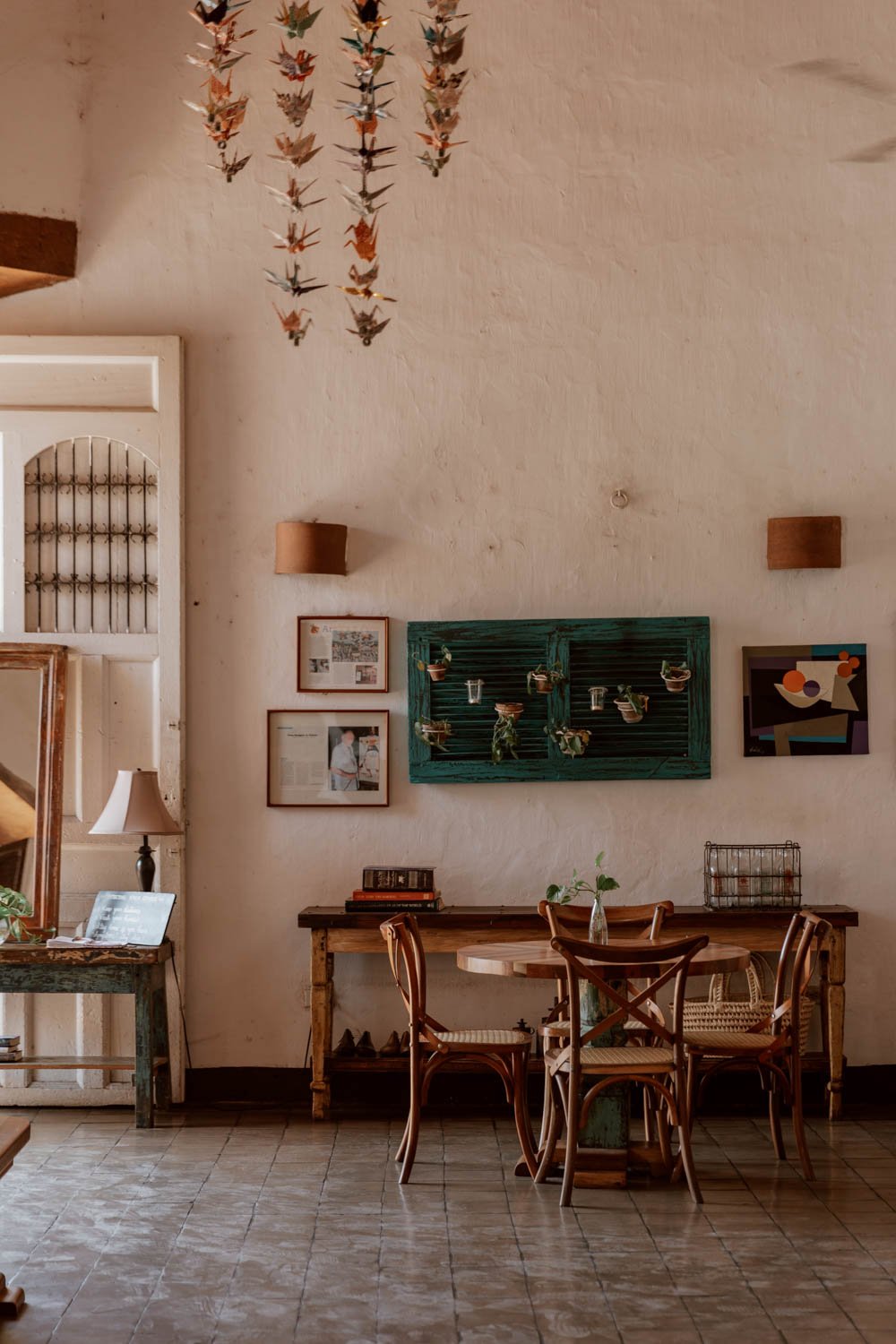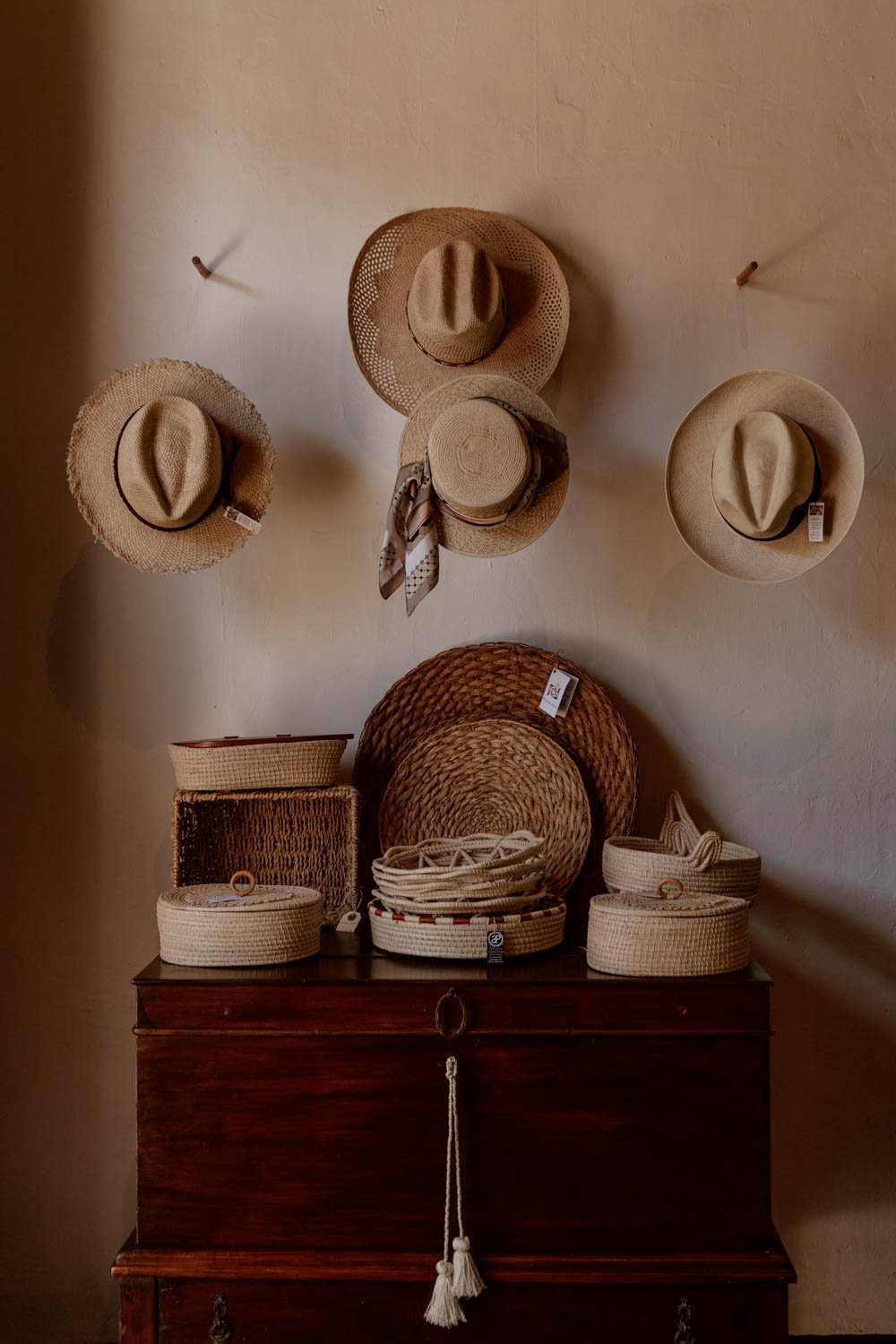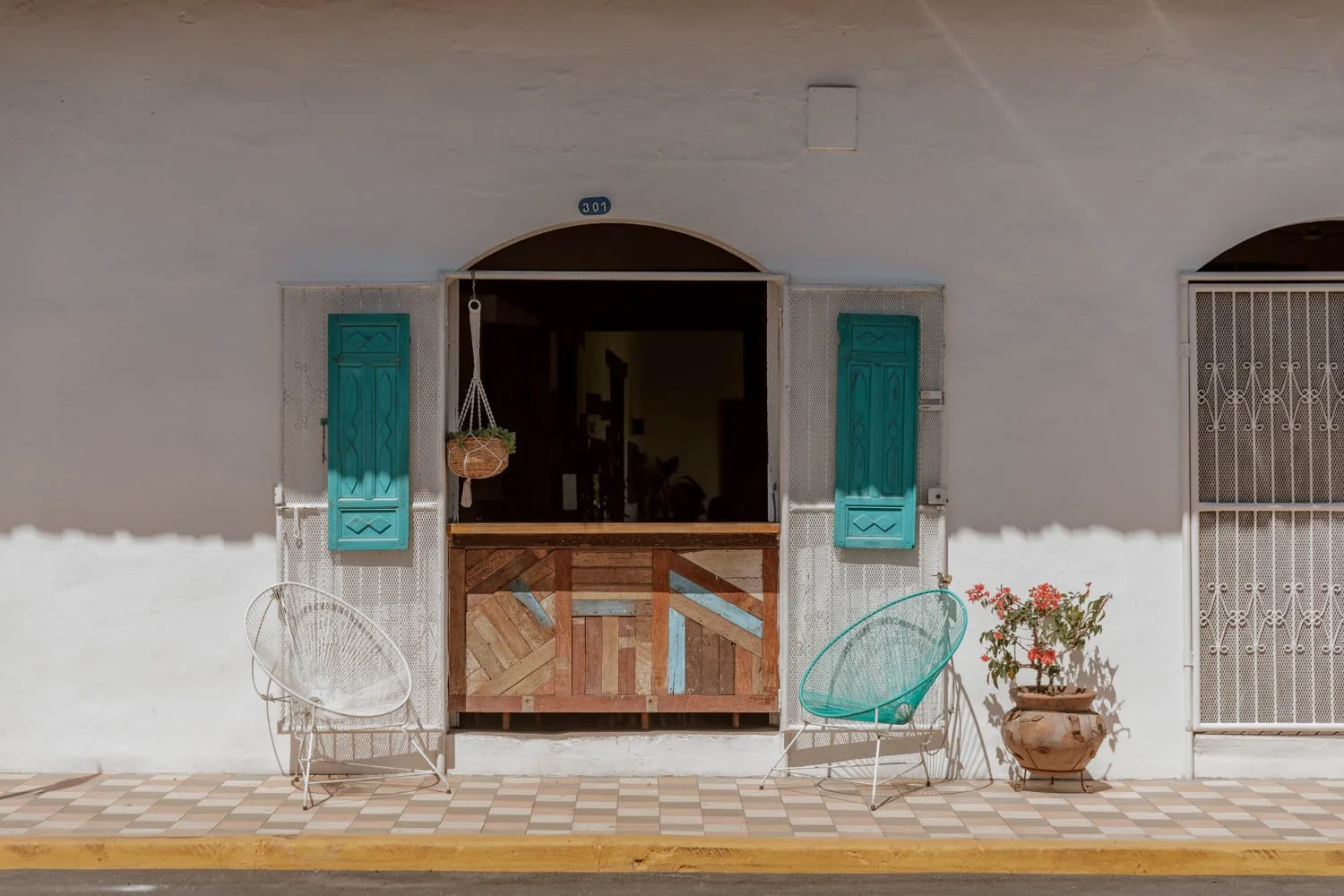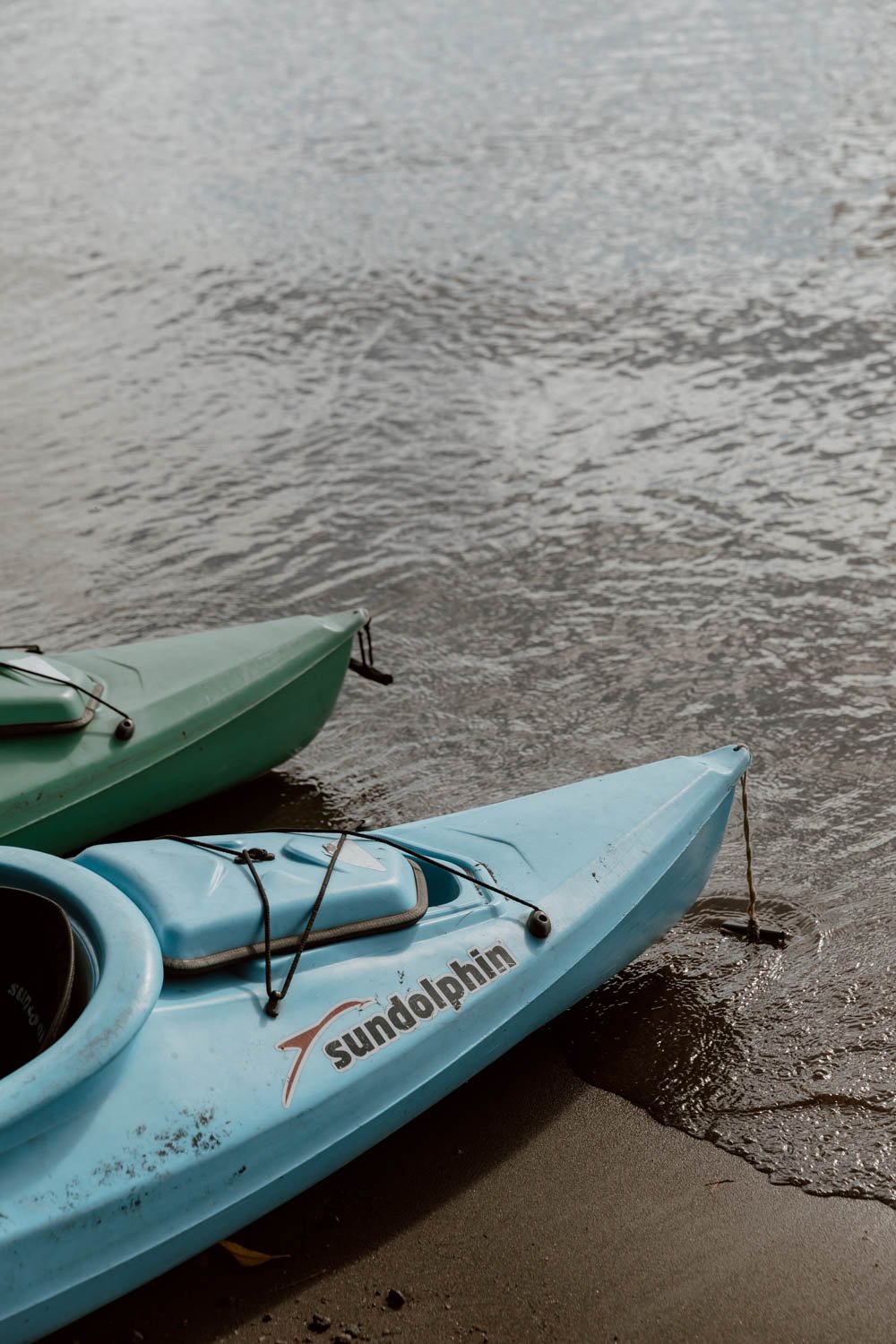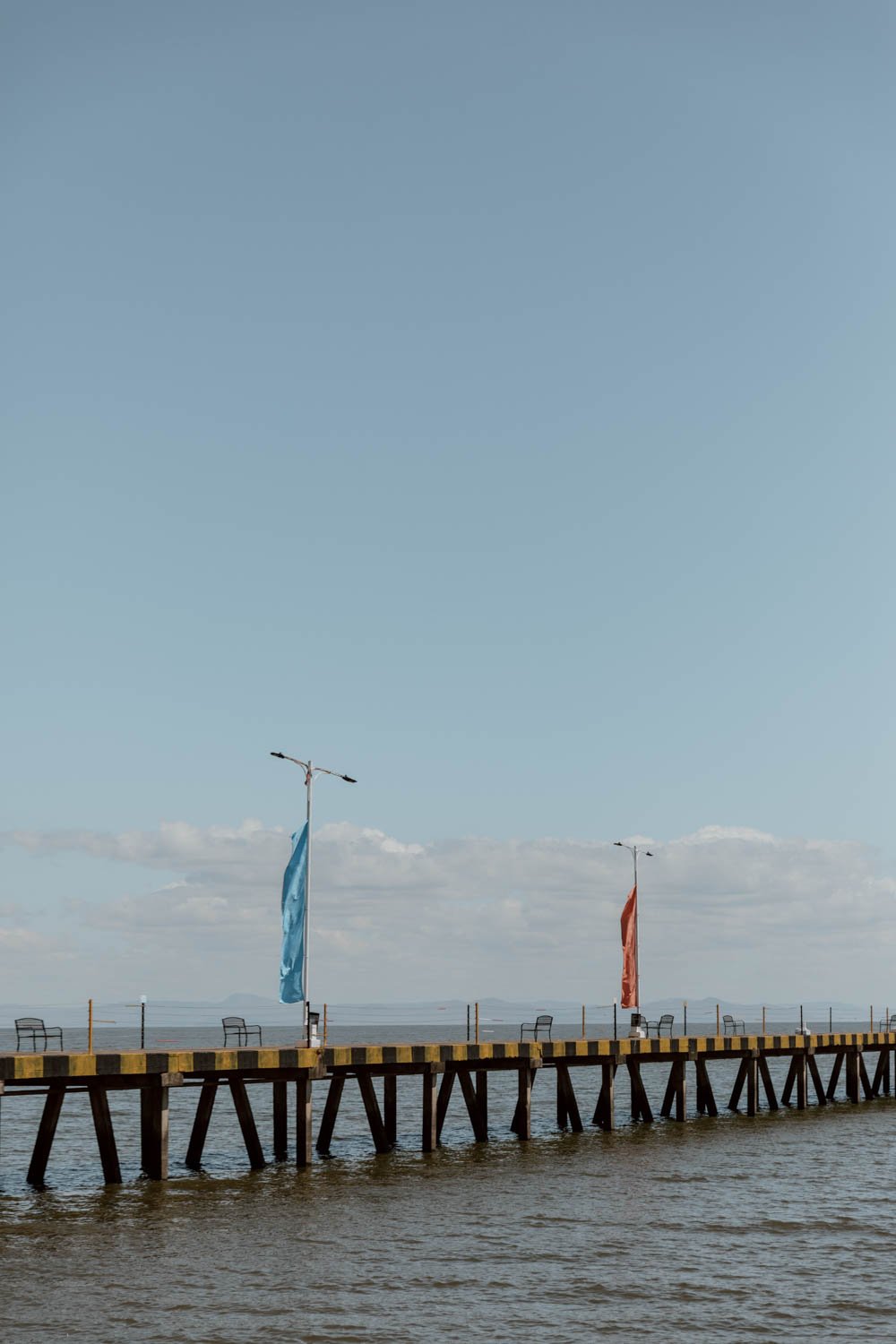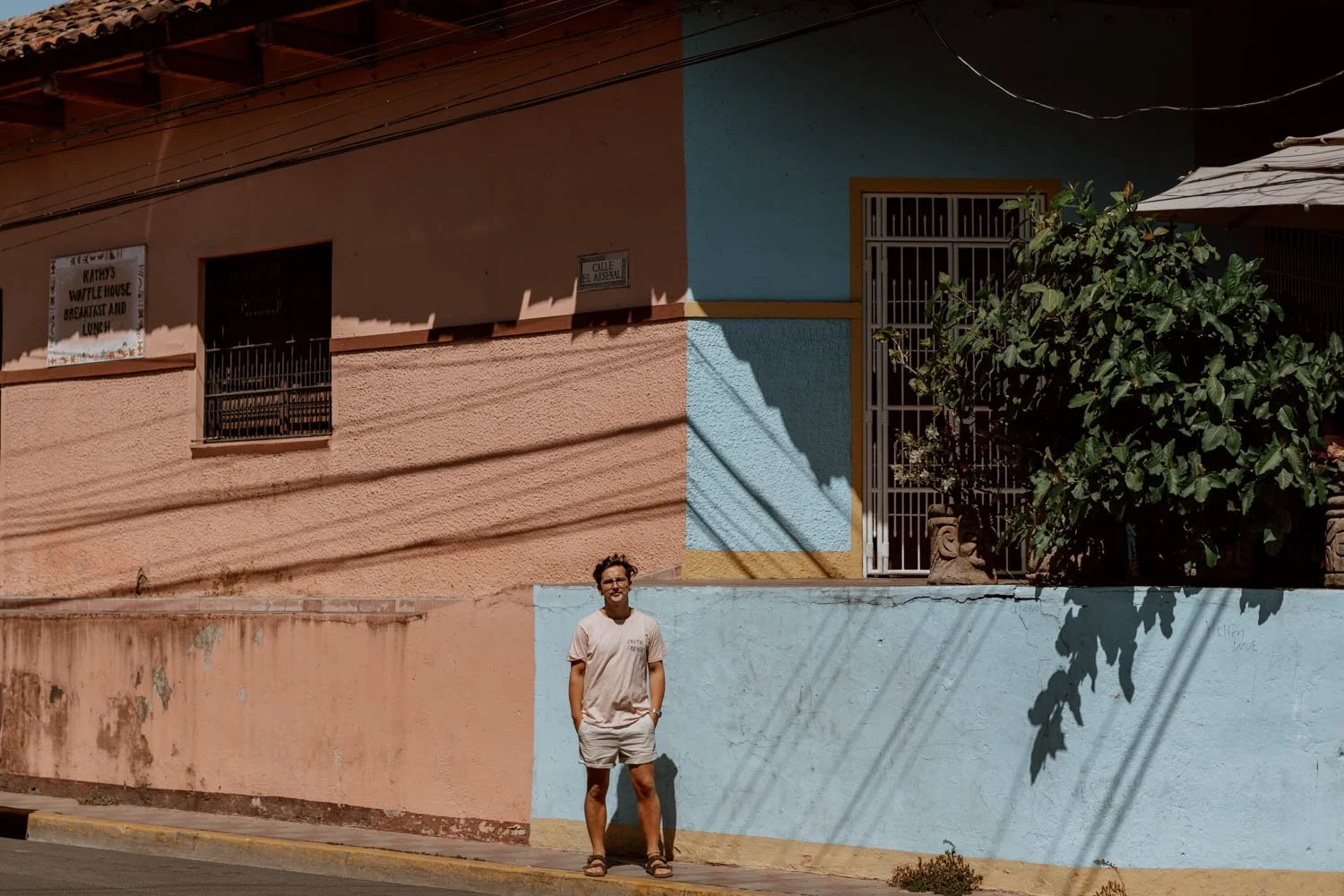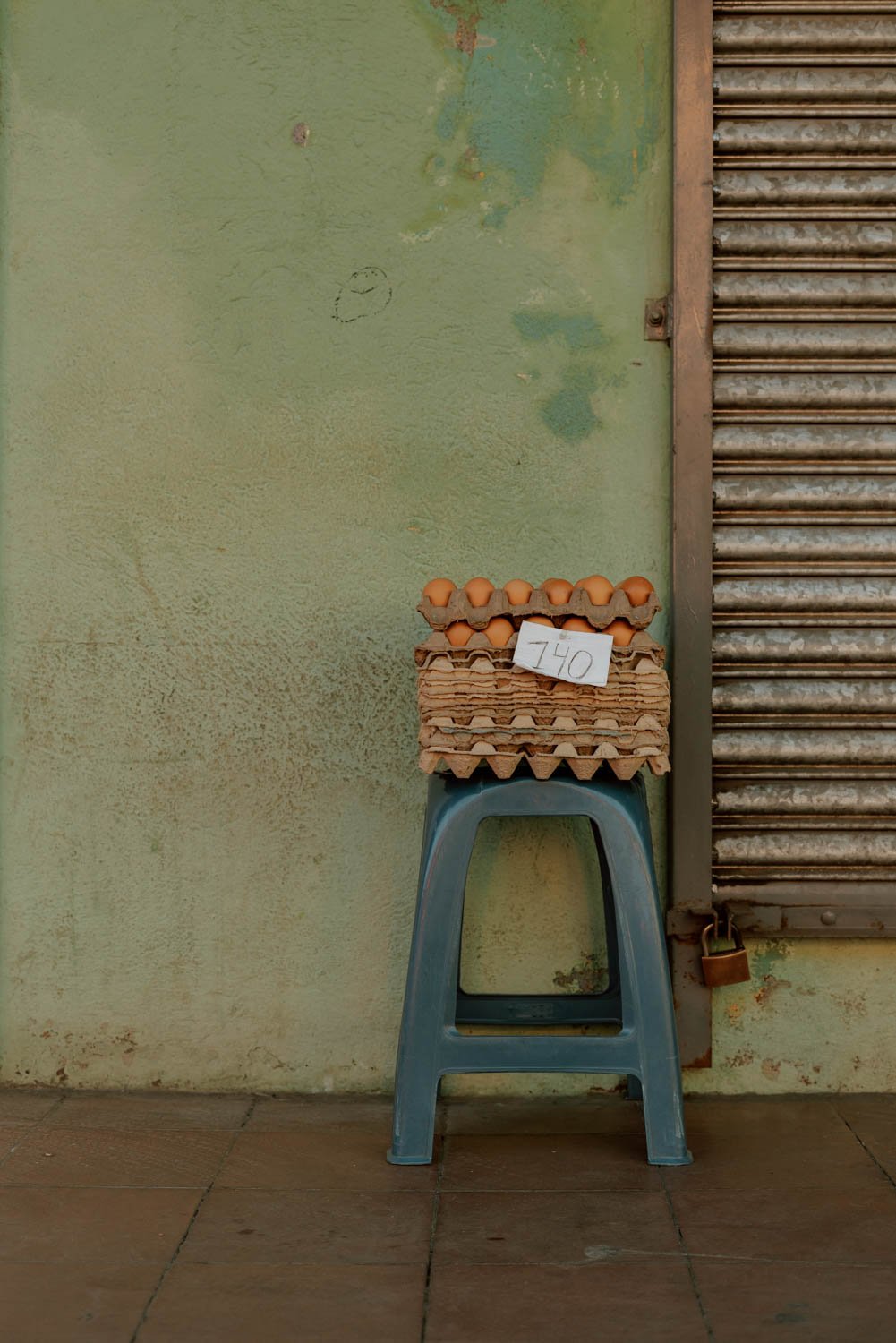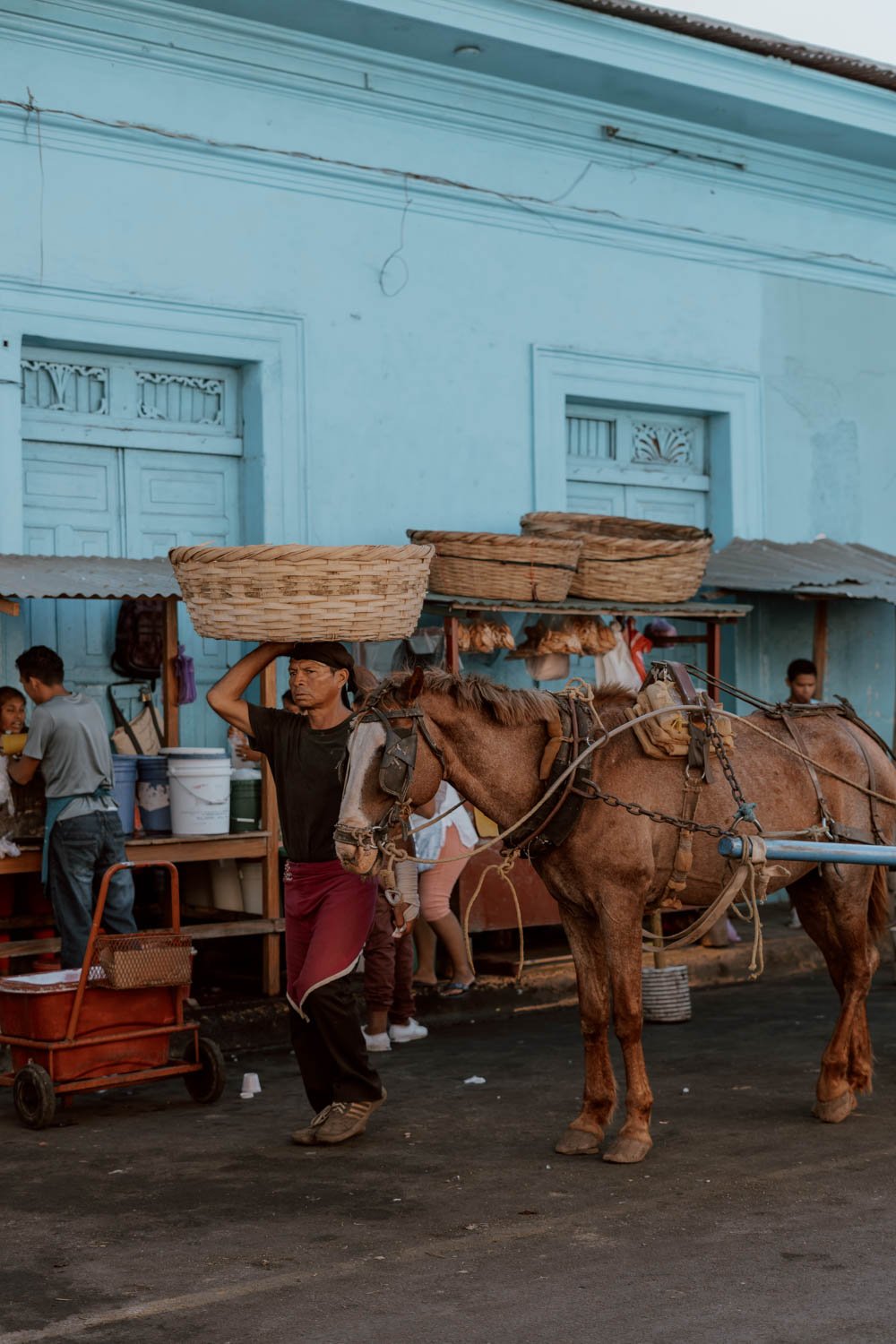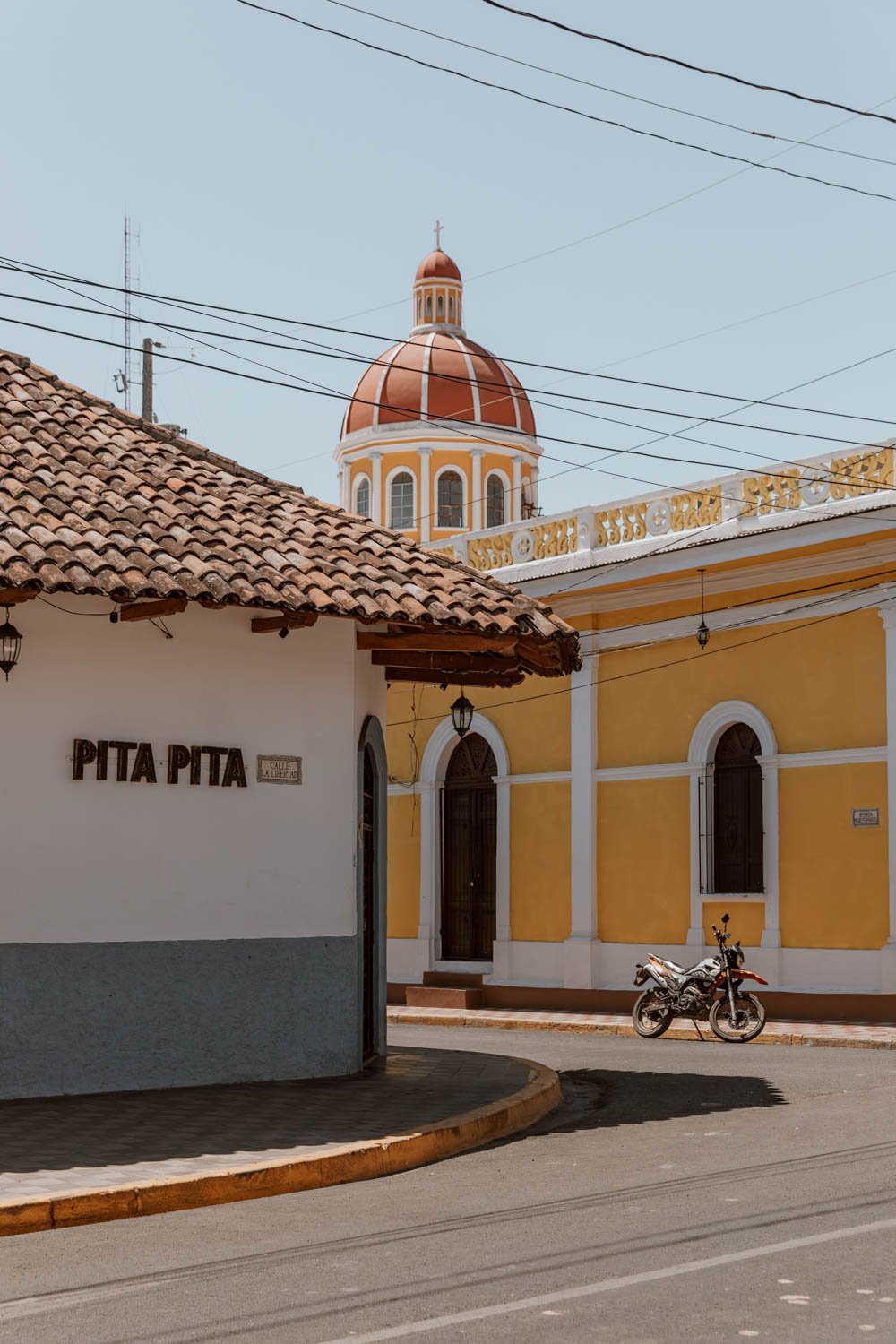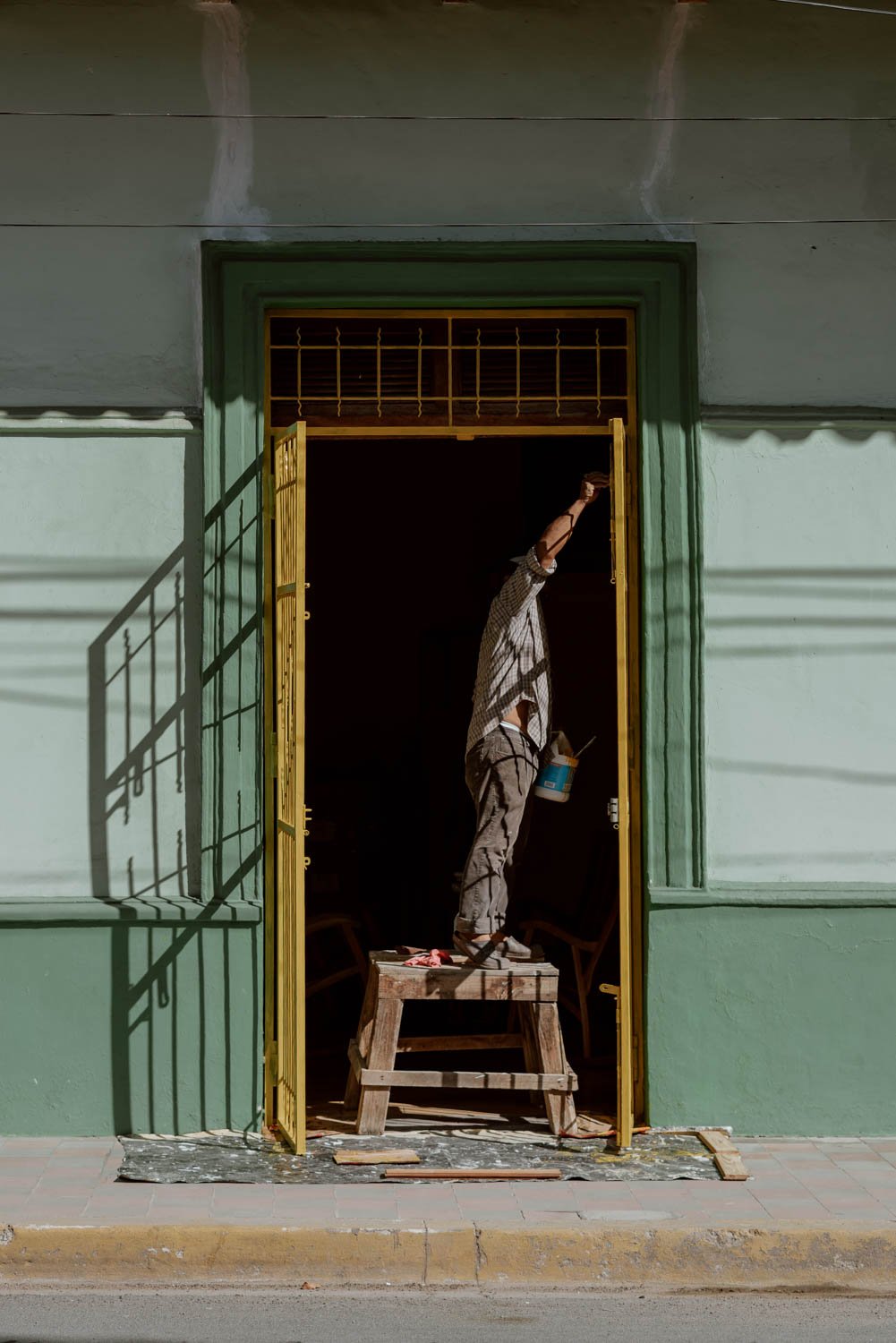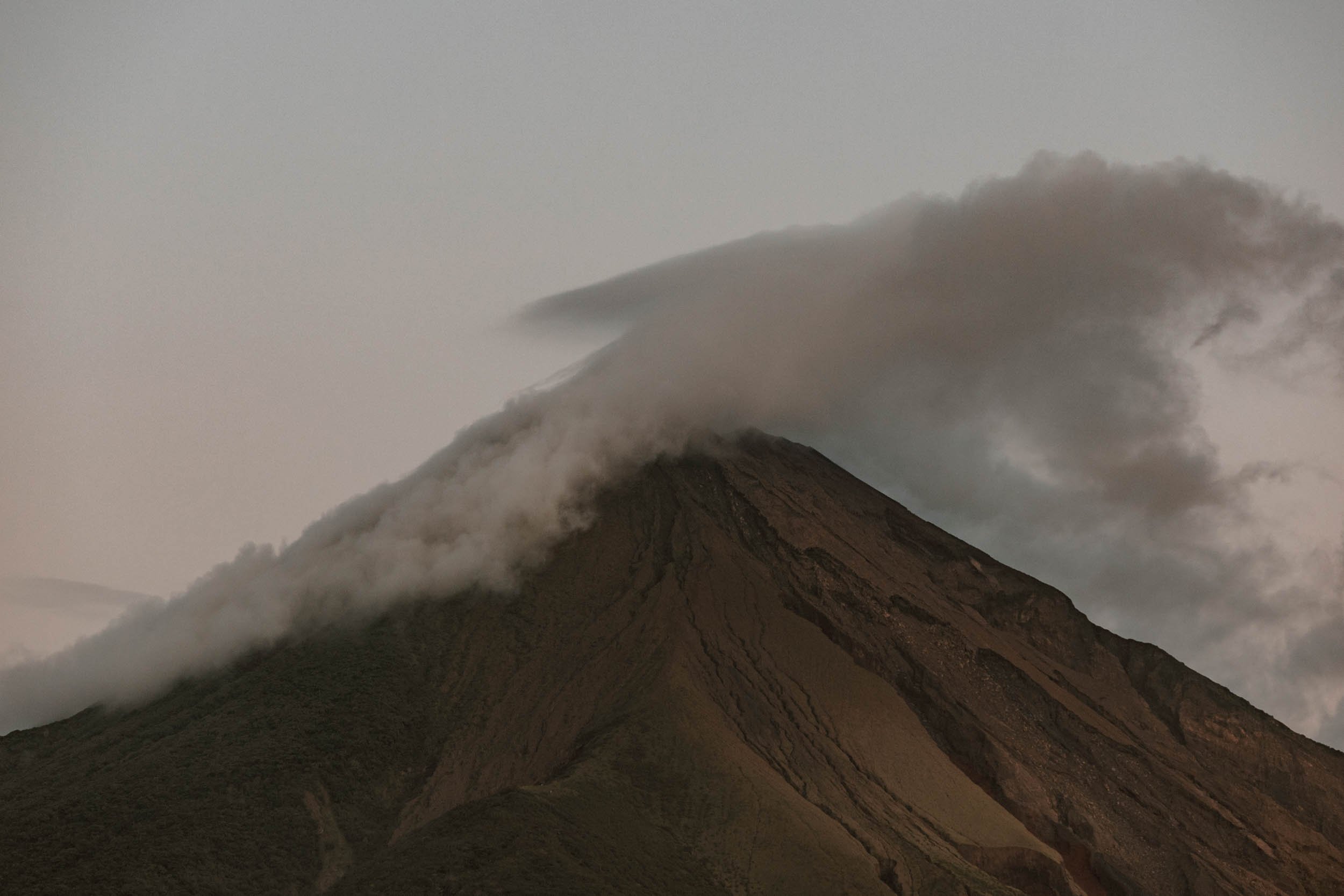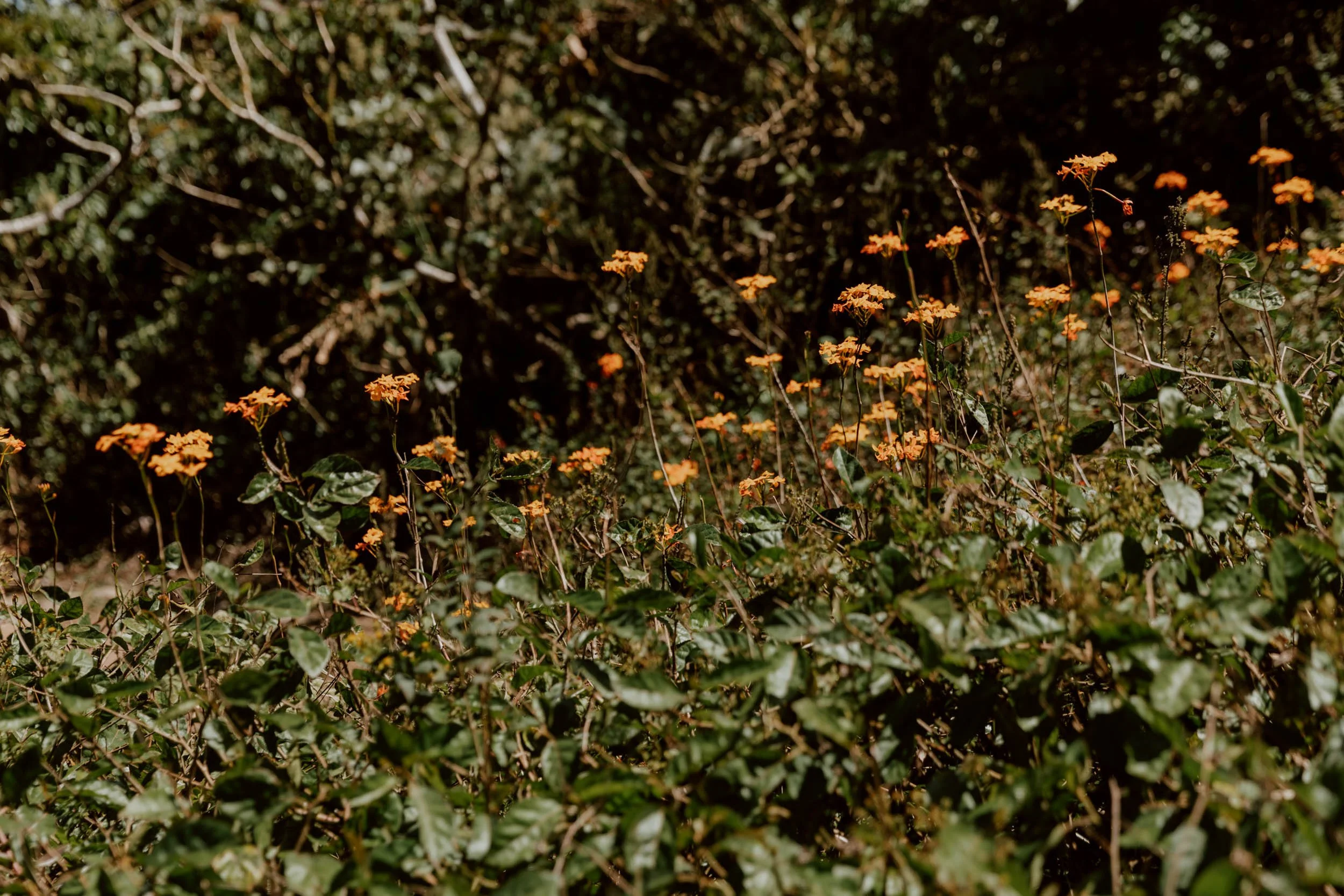We’ve shared all the best things to do in Granada - the gorgeous colonial city in southwest Nicaragua - to help you plan your stay!
This city of painted, peeling yellows, blues and bloodstain reds is a foundation stone of the modern-day Americas.
Half a millennia ago, goods and people, explorers and plunderers would be carried here from the Atlantic waves via the circuitous San Juan river to a settlement on the shores of Central America's largest lake.
Encircled by a ring of fire, the town of Granada would be built by the Spanish and grow into a colonial powerhouse. A first port of entry for many excursions into the New World, a trading port for fortunes to be made and to be squandered, a prized possession to be squabbled over and sacked by pirates and foreign mercenaries with a lust for gold.
The painted city endured, bearing presidents and poets, and served as the conservative counterpoint to the revolutionary León in the northwest.
Founded in 1524 by conquistador Francisco Hernández de Córdoba, the founder of Nicaragua and the man whom the currency is named after, Granada is the oldest city in Nicaragua. To walk its streets today, with metronomic click-clack of workhorses pulling rickety carts and the frenetic beat of Latino daily life pouring out from broken speakers or hoarse baritone throats, it really doesn't take much imagination to picture how things worked here a few hundred years ago (once you block out the roaring exhausts of motorbikes and the beeps from beaten-up taxis).
Decripit and decaying in parts, the colonial aesthetic of Granada is the big draw. Chessboard sidewalks, tiled hallways, painted walls of cherry red, lime green, bubblegum blue, and banana-skin yellow. Modest doorways belie the open-sided historical spaces within and, when the sun fades, locals sit outside in rocking chairs to read the paper or share the day's gossip and lovers cycle sidesaddle to secret places.
It invokes a little of Cuba, a lot of Cartagena, and rivals Guatemala's Antigua for the mantle of ‘prettiest city in Central America’.
In the back of a truck on the dusty road from Playa Maderas, an American traveller told a young European backpacker that there was no point going to Granada.
She was very wrong.
Across two trips, we've got stuck twice in this city; the heat and the hustle and the hectic movement may not be for everybody, but it got right under our sweaty skin. Quite simply, if you’re travelling in order to feel like you're somewhere where life moves to a different rhythm and not everything makes sense straight away, where there are characters by the bucketload and daily montage of scenes play out on a beautiful street stage, there's every reason to get stuck here too.
In this post, we've shared the best things to do in Granada, plus our personal recommendations on where to stay, where to eat, safety, and how to get around. We've also included essential travel tips to help you travel better in the ninth-largest city in Nicaragua and advice on how long you really need.
This is 13 wonderful things to do in Granada.
Get Lost In The Market Dance
We don't want to get your expectations up too much here at Along Dusty Roads.
But this may just be our favourite street and market in Central America.
Running from the UNO petrol station up to Calle El Commercio, past the spectacularly named Calle El Yo Yo and petering out where the banks and slot-machine casinos handily call each other neighbours on Calle Atravesada, Granada’s market is a whirl of activity from 6 am, six days a week.
The cast of characters, the scenes, the smells, the set dressing, and the curious sights all coalesce into a perfectly chaotic whole.
Gnarled men carry sacks of tomatoes upon the neck or heft plantain green stalks on the back. Women wave red and blue rags to keep the flies at bay from fowl and and fish of questionable freshness, whilst a rickety table holds a pig’s head with a bloody nose. Vendors shout, heckle, and cat call one another or flirt with passers-by, multiple generations man a single stall or girls gossip as they distill tomatoes and onions from one plastic bag to another, slightly smaller plastic bag. There’s produce piled up high in wicker baskets or round plastic tubs, scraps of discarded paper and peel on the wet concrete waiting to be swept into the centre. Menders of watches, shoes, clothes, and broken hearts. Cartons of counterfeit cigarettes with names like ‘Elephant’ and ‘Modern’ stacked in Jenga piles, slick-haired men fanning big wads of banknotes, a preacher man howling by the papayas as his assistant / daughter dressed in purple presses her ear to the deafening stand-up speaker.
Noise and movement. Smoke and sugar. Light and dark.
To walk up and down Granada’s market is a reminder of the reasons for and many more reasons against the existence of bland, generic supermarkets.
This place is independent entrepreneurial spirit in a collective hive that looks like chaos, but is actually a choreographed daily balletic production. It can feel a little overwhelming, especially in the heat, but this is just a great place to wander around, buy your food, speak to locals, and try to understand a little of how things work here in Nicaragua.
The actual Mercado Municipal de Granada is set within the faded grandeur of this turquoise building (maps), but spreads out, round, up and down the surrounding streets and one both sides of the permanently traffic-jammed Calle El Commercio. We recommend trying to be here in the morning at least once, but things stay open to a varying degree until about 4-5 pm (mostly closed on Sundays).
Parque Central de Granada & The Cathedral
Painted the sunshine shade of overripe mango flesh, you've almost certainly seen the Cathedral of Granada before; the neo-classical building is used so often to promote Nicaragua in guidebooks, newspapers, and websites, that it's akin to a national symbol.
Its tumultuous past mirrors that of the city it towers over: created in the 16th century, burned down several times by outsiders - including by William Walker, the American mercenary and former President of the country - and left to rack and ruin before slowly being restored to former glories in recent decades.
Today, this icon of Nicaragua stands proudly on the east side of the Parque Central de Granada in the centre of the historical centre. As you roam around the city, you'll pass through, by, and across the square several times - and many of you will actually stay in it if you book at the popular Selina hostel.
During the day there are souvenir stalls selling blue-and-white baseball tops and Nicaragua t-shirts, a few food stalls or old men with ice-cream carts, and dozens of horses and carriages lining one side. There are pretty reconstructed colonial porticoes and archways around the perimeter, restaurants and open spaces in the neighbouring Plaza de la Independencia, and regular events - religious or governmental - are held here on weekends. Not much goes on, but somehow there’s always something going on.
If Calle El Commercio is the main artery, pumping blood and money, then this is the city's heart.
Good To Know | You can go up to the top of the Cathedral roof for a $1, but the best view is actually from Las Mercedes as it includes the Cathedral! If going inside, remember this is also an active place of worship, so dress and act appropriately. Keep an eye out for the very unique fresco of Noah, the elephants, and the tiger.
Note that one of the most popular things to do in Granada for tourists is a horse and carriage ride around the city, and Parque Central is where most of the guys are offering tours. In contrast to the workhorses and carts, these nags are dressed more ornately and carriages are set up to be more Cinderalla-esque and romantic.
Unfortunately, based on what we've seen in person and read online, we can't endorse this activity. The condition of a number of the horses is very poor, and they're made to work long hours in peak heat. We recognise it's a catch-22 as, without paying customers, the treatment / condition of the animals is less likely to improve. To find out more, both Animal Aid Abroad and World Vets operate care and clinic programmes for the work and carriage horses in Granada.
Lastly, there can be a few unsavoury characters here in the evening so we recommend avoiding walking through it alone at night when things have emptied out - as we detail in ‘Essential Things To Know Before You Visit Granada’ at the end of this post, taxis around the city are frequent and cheap.
Sunset From Iglesia Nuestra Señora de Las Mercedes Granada
If you're looking for the best view in Granada, you'll find it in the bell tower of this 16th century church.
The dull grey facade, scarred by pirates and fire, offers a a stark contrast to the colourful exteriors for which Granada is famous. However, from the top you have a panoramic vista of the imposing Volcan Mombacho on one side, Granada's iconic cathedral over the browning terracotta rooftops on the other, and the chance to watch the dance of the horses, taxis, and people taking place in the streets below.
We recommend going up for golden hour and sunset.
When + Where | It costs $1 to access the rooftop and closes at 6pm (last entry at 5.30pm). Unfortunately we didn’t take a note of opening times / days, so please let us know in the comments! Note that everyone starts to get ushered down at about 5.55pm
Find the church here on Google Maps, right next to the best hostel in town (De Boca en Boca).
Enter through the main door and go left immediately to buy your ticket and head up the narrow stairs. This is an active place of worship, but to go up to the roof you don't really go into the main body of the church - however, if you wish to take a look there too, make sure you dress and act appropriately.
Breakfast at Café de Las Sonrisas
Everyone should have breakfast at least once in Las Sonrisas; it’s guaranteed to put a smile on your face, and deepen your understanding of others.
Rebuilt after a destructive fire in 2020, this social enterprise is part of the non-profit Tio Antonio Centro Social, whose mission is to create employment opportunities for people with disabilities in Nicaragua.
All the staff and management at Las Sonrisas are deaf, with the pictorial menu designed in such a way that customers can easily order in an inclusive and straightforward way. The bright yellow wall has simple sign language phrases for you to learn and use, and the menu offers good value traditional plates (the portions are pretty chunky, so come hungry).
Within the same building, there's also a small atelier (open to the public) where hammocks are made from scratch and sold directly or online; this has employed 38 people with disabilities or at risk social exclusion since 2007. Sign language classes and workshops are also sometimes offered.
When + Where | Open 8am to 8 pm Tuesday to Saturday, 8am to 1 pm Sundays, closed Mondays. Find Smiles Cafe here on Google Maps
A Day Trip To Laguna de Apoyo
In the space where there was once a million tiny fires, there are now only gently ripples upon the water.
Only a half-hour or so from the city, Laguna de Apoyo is where you come to escape the heat, to cool down and plunge headfirst into the depths of a massive crater lake.
You can swim, kayak, dive, hike or just sunbathe and chillout at one of several 'beach clubs' by the shore!
We think it's unmissable, and an increasing number of travellers are also choosing to do overnight stays at Apoyo because of the unique setting and improvement in accommodation on offer. You can find out all the details in our dedicated planning guides, including our pick of the best places to stay:
+ Why You Should Visit Laguna de Apoyo
Eat, Shop and Coffee at The Garden Café
The Garden Café is popular for a reason.
Created by an American-Nicaraguan couple, for well-heeled locals it offers something quite different to others restaurants in the city, whilst for ex-pats or long-term travellers, the international menu and vibe is a little home away from home in a beautifully curated colonial space.
The coffee from northern Nicaragua is really good BUT they desperately need to sort the comically small flat whites (or rename them, as they're not flat whites).
Eating here is not cheap, so will be a treat for budget backpackers, and we recommend heading here when you can savour the food and the setting for an hour or two, rather than a quick bite. It's also a great workspace for digital nomads, but note that it does become very busy each day.
Even if you don't eat here, you should pop in to browse the beautiful local artisan crafts, jewellery and clothes on sale in the shop - pricey but some of the finest items you’ll see in the whole country.
When + Where | Open 7am - 9pm, seven days a week. Find it here
A few of our other suggestions for good coffee in Granada are:
La Sultana y el Café | Nice coffee, friendly staff, and the most gorgeous tiles we ever did see! This feels like it would be busier if Garden Cafe didn’t draw in everyone, but we had a few coffees here and always enjoyed the taste and setting. Good spot for a few hours' work!
Casa del Café | The fact their branding and interiors seem to based on Starbucks may appeal to many in a number of ways, but actually put us off heading into Casa del Café. However, with a little time to spare before getting the colectivo to Laguna de Apoyo, we stopped by and were happy to discover it's a family-owned business with all Nicaraguan coffee. We had a couple of cups on their pleasant, shaded terrace in the Parque Central and really enjoyed their brew - they have cafes elsewhere around the country, so not a bad shout for a fix.
Let us know in the comments if you find others good spots for coffee in the city as we couldn’t try everywhere!
Kayak Las Iseletas & Boat Trips on Lago de Nicaragua
When Volcan Mombacho blew its top thousands of years ago, it created an island for each day of the year upon the sprawling surface of Lago de Nicaragua.
Las Isletas, the 'little islands', are a beautiful constellation when viewed from atop their creator, but the archipelago is also home to small communities, verdant landscapes, wildlife and even the odd luxury resort or holiday home.
They're under 15 minutes from the city by boat, and you can either join one of the various boat tours which pass around and through them or head out on kayaks independently ($15 USD per person for 1.5 hours).
For boat trips, simply take a walk down to the Malecon of Granada (maps) and stand still - a tour operator will soon swoop in to offer you a ride! Alternatively, go into any tour office.
We’ve share more advice on this and others in ‘Five Fantastic Day Trips from Granada’.
Note that the redeveloped Malecon isn't something to be terribly excited about. On the evenings and weekends, it's busy with families and groups of friends, with a range of late-night bars and restaurants as well. By all means take a walk down during the day to see the lake and have a look around, but don't hold your breath or be too worried about walking too far along it to Santa Cruz.
Make Chocolate
Nicaragua isn't on the same level as Ecuador or other Latin American countries when it comes to cacao production or export, but it's generating a reputation for high-quality, small scale chocolate.
ChocoMuseo is the best place to learn about the history of cacao and understand the bean-to-bar process, as well as scoff down as many free samples as you can. It's quite a small, simple operation, but set in a pretty colonial building with a small courtyard cafe at the back.
There's the option of a free 30-minute tour (tips or purchases encouraged), just popping into the shop, or taking part in the daily chocolate workshops where you make your own bars!
When + Where | Open 10am to 6pm, seven days a week. You can just turn up for the free tour, but the chocolate workshops take place at 11am and 3pm, and need to be booked in advance. Find it here on Google Maps.
Cost | $25 USD per person for the two-hour group workshop, $20 for kids under 12 - find out more or book here. The chocolate workshop can also be booked here, but is more expensive.
Learn or improve your Spanish
If you’re not bothered about being next to a beach, then we can’t think of a better place in Nicaragua to settle in and learn Spanish!
On our first trip to Latin America, we chose to do a week of lessons in Antigua, Guatemala, and Granada offers a similar affordable set-up, but with the added benefit of being less than a couple of hours for weekend trips to the sea and surf!
There are several language schools in the city, offering homestays, immersive experiences, and good package deals; Casa Xalteva, SOL Spanish School, and Spanish Dale are all well-reviewed options in the city, but you may also wish to consider La Mariposa if being in the city isn’t so important.
Evening Drinks on Calle La Calzada
You'll hear Calle La Calzada before you see it.
In the most hilariously Latin American arrangement of speakers and bars, every place on this pedestrianised streets tries to compete with its neighbour on volume, making it a quite the cacophony of reggaeton, norteña, pop, and everything in between.
This is the place to come on the weekends and weekdays (though its noticeably quieter then) for drinks and dinner in the open-air, but you really do have to be in the mood for it to tolerate the noise and the atmosphere. Walk along the stretch and every waiter will offer you a menu and try to get you inside, but everything is pretty similar in terms of set-up and price. This street also underpins how impoverished much of the city is, with a number of destitute men and women going around the tables asking for change, as well as an array of sellers, buskers, hawkers, entertainers, and thieves.
As we said, you need to be in the mood for it.
During the day, it’s thoroughly transformed into a quiet, quite pretty street to eat on or have a coffee in the sunshine or browse a few artisan shops.
A Mooch in The Museums of Granada
For its history and its grand colonial interiors, Granada really deserves a fantastic art gallery or museum; it presently lacks such a keystone cultural attraction. Indeed, the best art gallery in Nicaragua is actually found up in León.
There are a few small, affordable museums or cultural hubs to check out, best done when the afternoon heat is at its peak, but in our view none are really ‘stand out’ on their own merits:
Museo Convento San Francisco | Set within a restored 16th century church, another which William Walker claimed when he set the city alight in 1856, this is the main museum. It houses murals depicting the history of Granada, works by Nicaraguan artists, poetry and pre-Coloumbian artists, and impressive large stone statues of Zapatera, an island on Lago d Nicaragua. Entry is just $2 USD per person and you only need about an hour or so. Open weekdays 8am - 5pm, 9am - 4pm on weekends.
Mi Museo | A small private collection of pre-Columbian art and pottery, dating from as far back as 2,000 BC.
Casa de los Tres Mundos / Case de Los Leones | It’s more of a cultural centre for locals, with various artistic workshops and events, but you can pop in to take a look around and there are often temporary displays or exhibitions as well as a little shop/studio. It’s set within an impressive reconstruction of the original 18th century building (another one claimed by William Walker’s arson), and it was 50 córdobas to enter when we stopped by.
Visit the Volcanoes
Given that the country's west coast is dotted with just under 20 of them, suggesting that you visit a volcano in Nicaragua is hardly an original suggestion.
When you go to Léon, you'll board down one or camp at the foothills of a belching crater; when you go to Isla de Ometepe, there will always be one of its two peaks in your line of sight.
When you go to Granada, the challenge is choosing which of its two nearby volcanoes to make time for (in addition to Laguna de Apoyo)!
The active Volcan Masaya, where lava bubbles and the scent of sulphur permeates, is the most alluring to first-timers. Steeped in myths and legends, and dubbed 'the gates of hell' by the colonial Spanish, it offers the chance to get worryingly close to the crater's edge and sense the intimidating power of nature. On our first trip to Granada, we prioritised it over the others, visiting on a dusk tour in order to fully appreciate the lava.
The verdant tropical forests of Mombacho, the dormant peak which you can spy from various streets in Granada, feel more like a nature hike. In fact, it's really easy to forget that you're in a volcano when walking around its crater! On the steep road up, there's some ziplines and a little coffee finca to stop at, and you can access a couple of great miradors at the summit. We visited it on our second trip to the city.
If you've got the time, budget and inclination, by all means try to visit both but most of you may only be able to go to one if based in Granada for two to three days.
To help you decide and plan, we've shared more information on day trips and tours to Volcan Masaya and Mombacho in The Best Day Trips from Granada.
Travel Tips for Granada
How Long Do You Need in Granada?
It depends on whether you’d like to use it as a base for several day trips from Granada or prefer to spend less time in the city itself and more time overnight in places like Apoyo or Masaya. We’ve spent about four weeks in total based in Granada, and the rhythm and heat of the city really suits us and our work whilst one the road - its range of good to great Airbnbs for digital nomads, alongside handful of very good hostels (and some very over-rated ones), also makes it a good place to unpack for a while. However, it is small and some of you who don’t ‘click’ with its bustling charms or the heat may hope to be moving on after a couple of days to the coast or Ometepe.
We think you need at least three nights here though but, if it seems like your sort of place or it’s going to be a base, then go for a slow travel four or more.
In terms of accommodation, we can recommend the Airbnb we stayed in - Calala Apartment 2 - which also has two slightly smaller listings with great reviews in the same building (Calala One + Calala Three). You can also find them here on Booking.com.
The best hostel is De Boca en Boca, whilst those looking to treat themselves to a grand colonial hotel should check out Hotel Dario and Hotel Secret Garden.
What's The Best Time of Year To Go?
It’s a year-round sunny destination, but the afternoon heat will be unbearable for some from March to June. That doesn’t mean you should avoid it during those months, but simply wake up earlier to explore and head for the shade at lunchtimes when the mercury can hit up to 35°c. The ‘cooler’ months are August to December, but note that the average temperature remains above 26°c!
There’s not much rain throughout the year, but chances of showers are highest from August and September.
Where Should You Go Before / After?
If flying into Managua’s Aeropuerto Internacional Augusto C. Sandino, most of you should simply make your way straight away to Granada (45-60 minutes), rather than heading into the capital city. Granada is also a popular stop before / after Isla de Ometepe, San Juan del Sur, and León, with regular and convenient public transport links from all - note that you may need to transfer buses in Managua or Rivas.
There’s no single Granada bus station or terminal. Instead, chicken buses and colectivos drop off / departs from various parts of the city depending on the destination. For Nandaime or Rivas (and onward travel to San Juan del Sur or Ometepe) , head toward this street (maps) about 10-minutes walk from the centre; for Laguna de Apoyo, Masaya, León or Managua, head to this little terminal (maps) off the Parque Central.
How to Get Around Granada?
A colectivo taxi anywhere within and around the city costs just 20 córdoba per person (25-30c at night), and they’re easily found on any street or square - except from whenever you actually need one!
They’ll beep constantly, but won’t necessarily take you if they’re already got passengers and are heading in a different direction. Use them after dark and to catch a bus for a day trip from Granada or your next destination - note that they may charge you 10-15 córdoba extra for luggage.
ATMs & Groceries
You’ll find a cluster of ATMs, as well as guys with massive stacks of cash to exchange, around the intersection of Calle La Libertad and Calle Atravesada (maps)
For groceries, the market should be your first port of call. There’s also the terrible Pali supermarket nearby (crap choices, owned by Walmart) for certain goods but, the best supermarket for treats and things you can’t find in the market is actually the La Colonia (maps), next to the highway but a safe 15-minute walk from the city centre.
Is Granada Safe?
There is a lot of poverty and hardship in Granada, but that doesn’t automatically mean it’s dangerous or unsafe. There are however some unsavoury characters. Of course, be sensible when walking around with valuables and don’t leave anything unattended. After dark, we recommend taking a taxi back if alone, and the Malecon is a well-known robbery hotspot at night, so avoid it.
Responsible Travel in Granada
· It is very common to have young children or teens asking for money or selling little trinkets or leaf-origami. Always be polite and kind, but remember that giving money only encourages their families to send them out on the streets to work rather than to school.
· We are huge animal lovers, and there’s a very clear issue with streets dogs in Granada. We weren’t able to find a specific animal shelter based in and around the city (a contributory reason to the problem), but please do let us know if you find out about an organisation or a way to help.
· Spread your money and wealth across locally-owned businesses big and small, rather than spending most of your cash in the hostels or ex-pat focussed businesses.
· There are a couple of laundry places to head to, but we can personally recommend Fernanda’s (maps). She charges a good price per kilo and did a great job with our dirty clothes - they’ll also drop it off for free at your hostel. She’s open 8am - 6pm Monday to Friday, 8am - 2pm on the weekends. Google Maps has her in the wrong location by, but the link we’ve put above is in the right spot.
Eating Out in Granada
We usually put a bunch or restaurant recommendations in our guides, but the truth is that we were underwhelmed with a lot on offer in Granada (and devastated that our favourite breakfast spot from our first visit had closed down - they did the best fried queso). As we're vegetarian, it's sometimes difficult to find a lot of good offerings on the tradition local or gringo-friendly menus, but nothing beyond the places noted above stood out as particularly recommendable. Due to this, we ended up taking advantage of our kitchen and the market to cook up meals we were missing in our Airbnb rather than eating out a lot.
A couple of notable mentions though are:
Banana Burger / Tostometro | A locally-owned restaurant on the main market street which offers an unusual slant on the sandwich / burger by using giant tostones (fried plantains, one of Emily’s obsessions) instead of bread. Veggie & vegan options available.
Pita Pita | Put off by the really quite high prices, we didn’t actually eat here but people rave about their Middle Eastern cuisine and it has truly excellent reviews. Also offers great meat-free options.
By all means let us know if there's somewhere you'd recommend or that we missed!
Where to Next?
Why You Should Visit Laguna de Apoyo
How to Get to Laguna de Apoyo | Without a Shuttle
A Short Guide to Visiting Mombacho Volcano
13 Wonderful Things to Do in Ometepe
16 Things to Know Before Visiting Ometepe
How to Get From Granada to San Juan del Sur
The Best Day Trips From Granada
13 Wonderful Things to Do in Nicaragua
Surf, Sand & Shots | A Traveller’s Guide to San Juan del Sur




